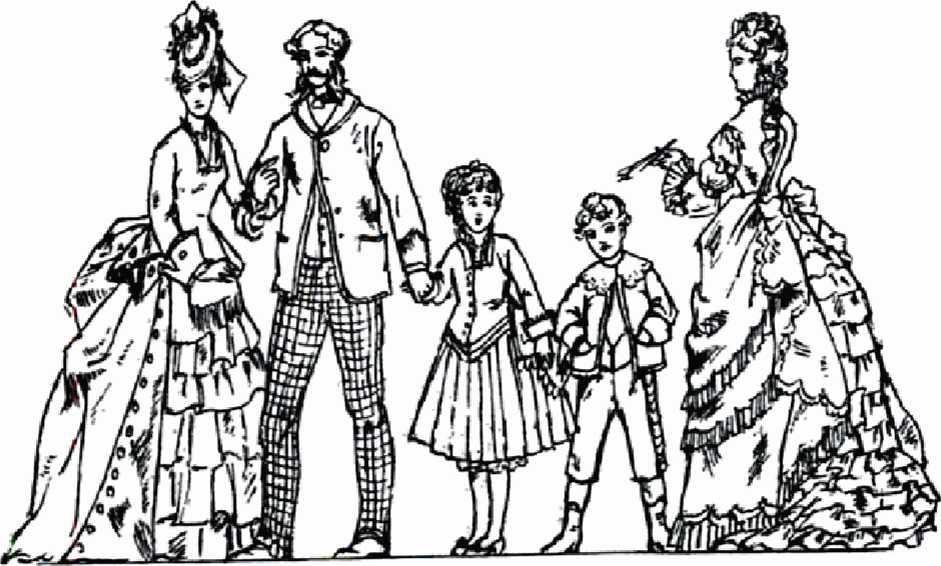Corsage usually had the effect of a cavalryman’s tunic, the skirts of the jacket projecting over the bustle. The draped appearance of the back of the skirt was universal, and skirts had a great many narrow flounces. Walking dresses touched the ground and some were even provided with a train. The cot of the dresses became very complicated, and a contemporary writer complains that whereas in former times an outmoded dress could still be used for something, in the ’seventies garments were composed of so mar. y fragments of different materials that their only after-use was for the manufacture of patch-work quilts. It was the general custom to cut the dress out of two different materials, one patterned, one plain, and then to make one portion of the dress of the pkin material trimmed with the {xtttcmed, and the rest of the patterned material trimmed with the plain. Check patterns were in great demand, and colours sometimes strident.
In the catly 'seventies the mass of curls at the back of the head assumed, sometimes, monstrous proportions. The hair was also dressed higher at the back than it had been, with the result that the hat, which was still small, was pushed forward over the forehead.


?n9lisb G>stume




 World History
World History









